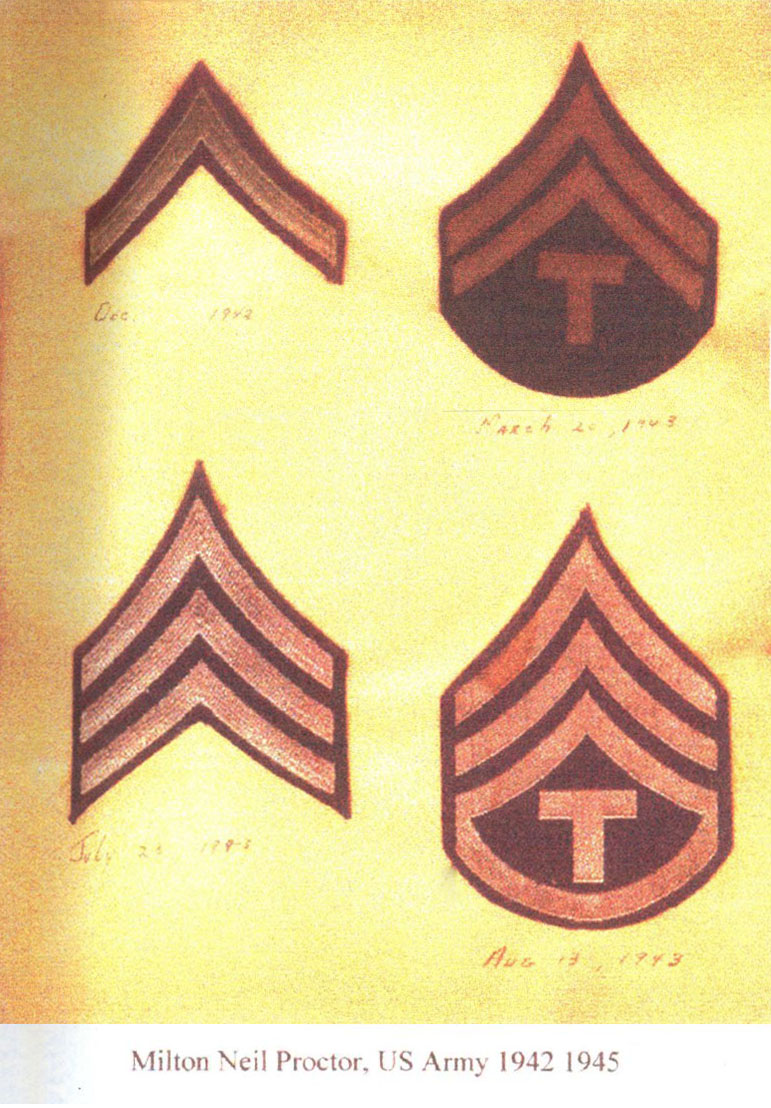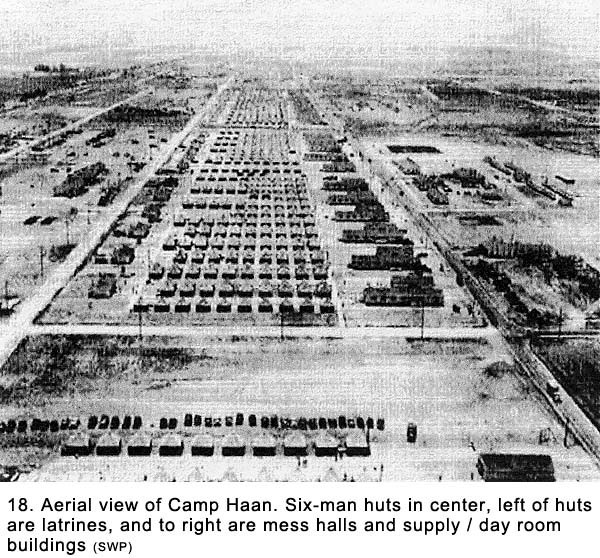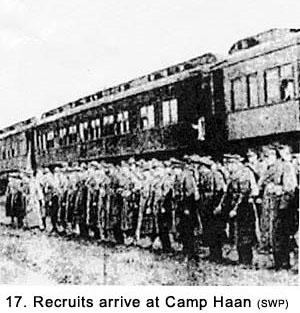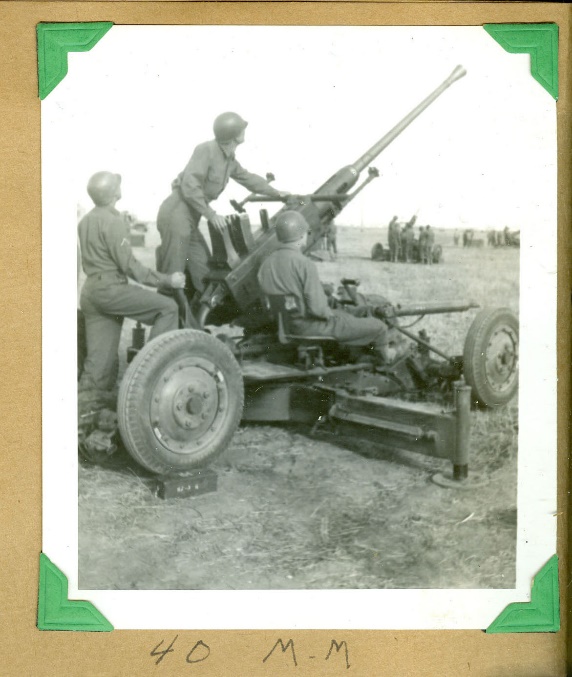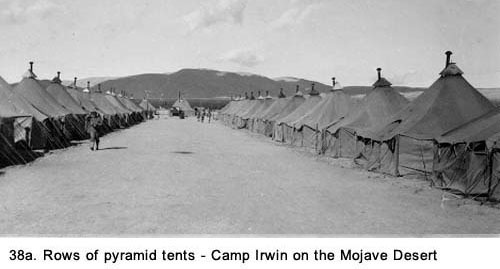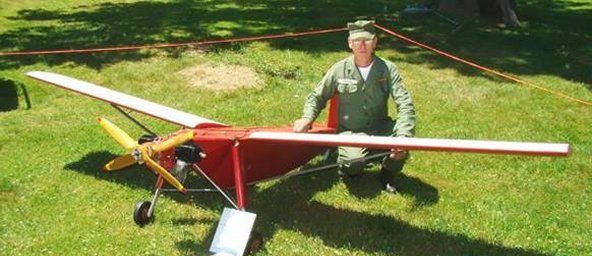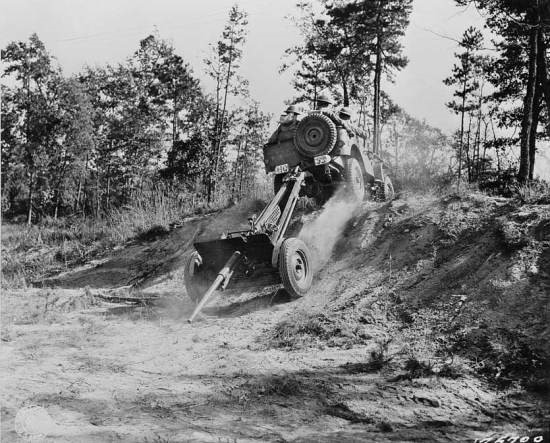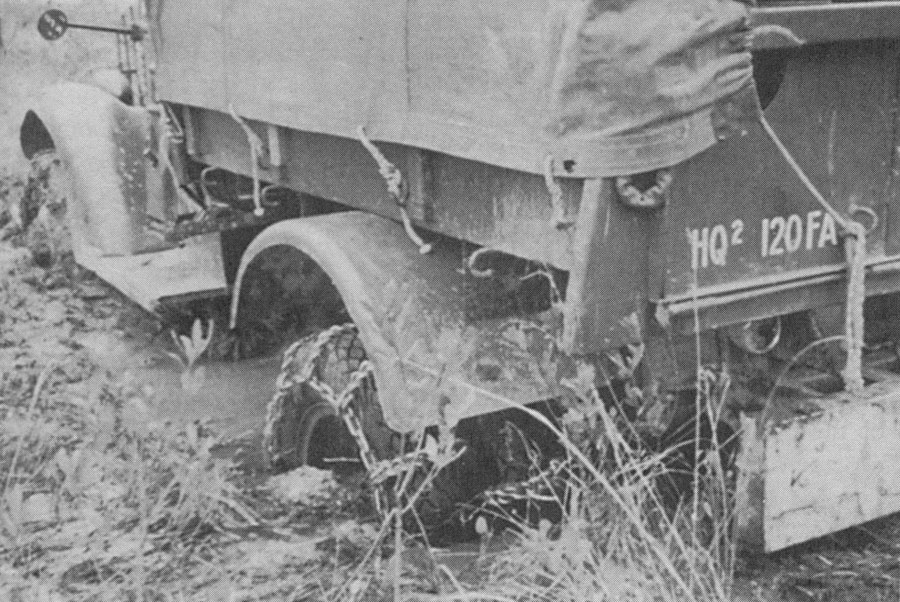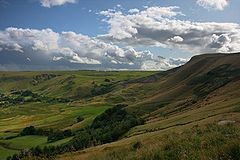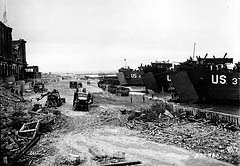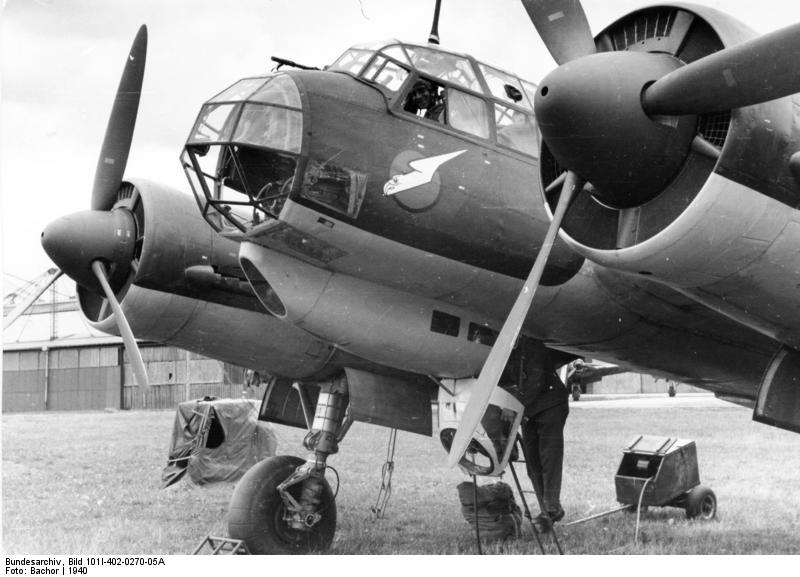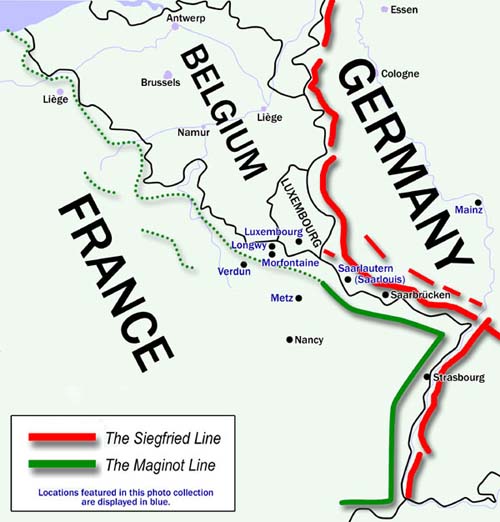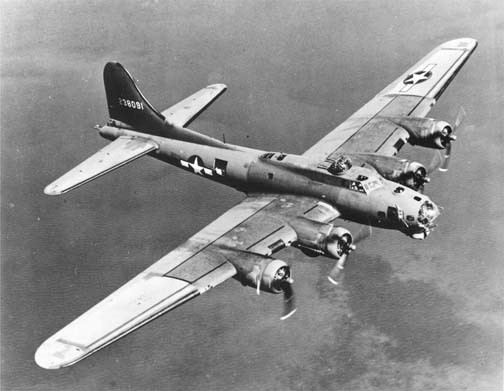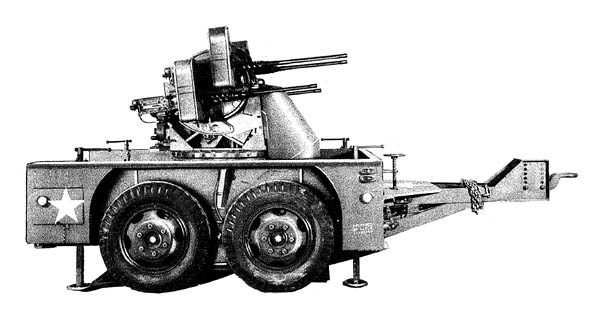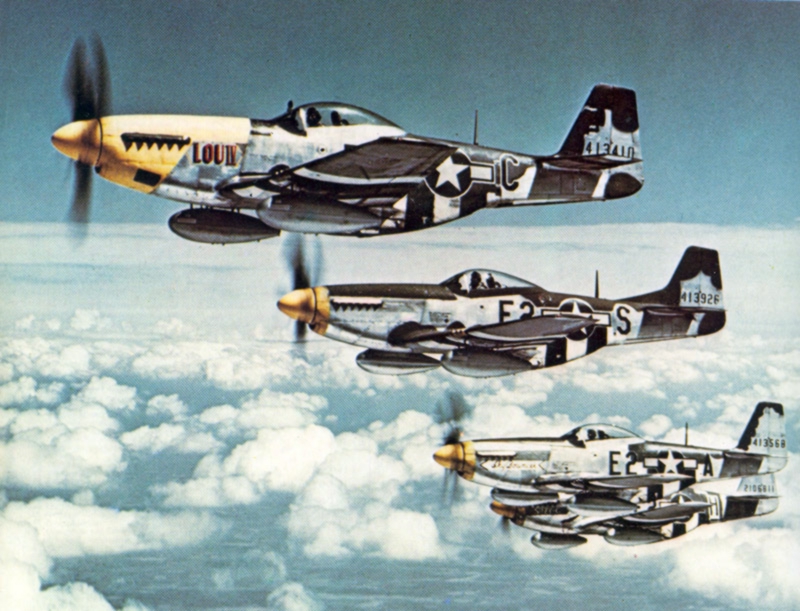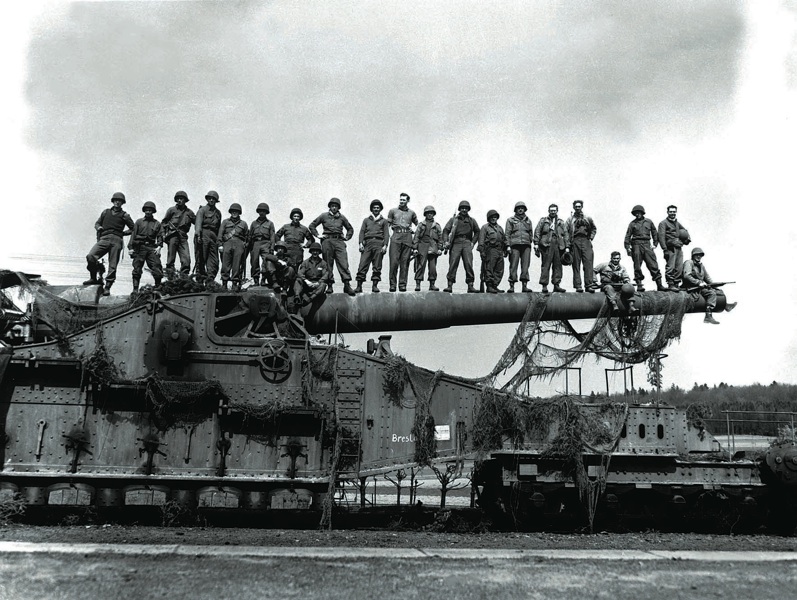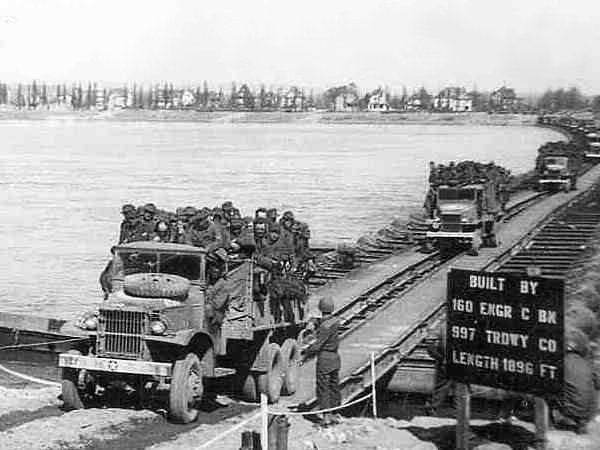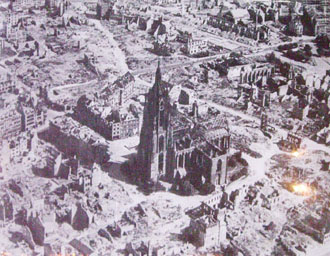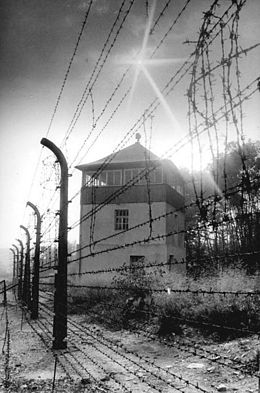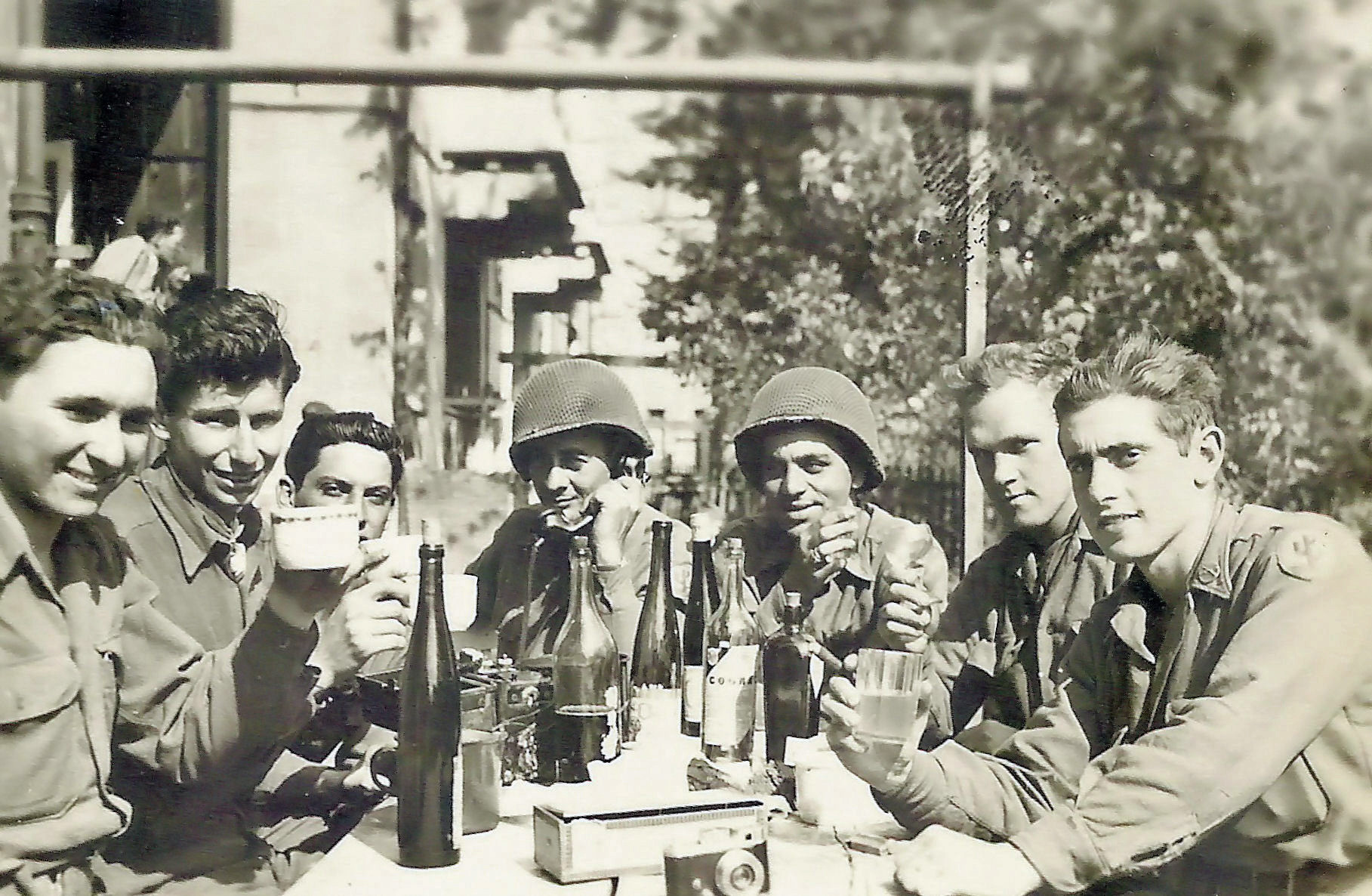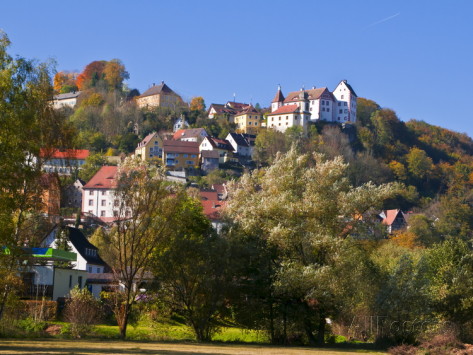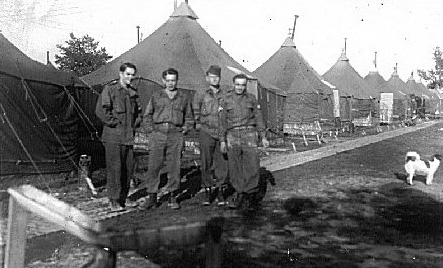FOREWORD
This history, that I hope will eventually reach all of the members of Dog Battery, was prepared by Tec 4 Kenneth W. Shephard as an aid to publication of the Battalion History, “March Order”. There was so much of it that was of primary interest only to members of Dog Battery that only high spots actually appeared in the Battalion Publication. Shortly after “March Order” appeared, several of us decided that it would be a fine souvenir and an excellent reference source for the many stories that we will be spinning during the rest of our lives ‐‐‐ stories that no doubt will be bigger and more heroic than the ones that follow in this pamphlet. Always remember that it is quite a shame to spoil a good story by sticking too closely to the truth.
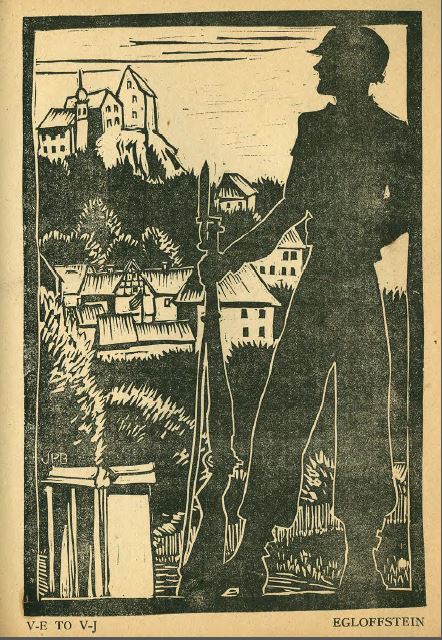
Wood Cut from “March Order”
As I write this, some of the people that this story concerns are wearing civilian clothes again: some are in the pipeline headed toward the United States and that discharge, and many more of us are momentarily awaiting our entrance into that pipeline. On behalf of Captain Bunker, Lt. Maguire, Lt. McDowell, and all the other officers who have had the privilege of serving with you through these years that have been most probably the most interesting if not the most pleasant of our lives. I wish to thank each of you for the fine cooperation that you have given us, and extend to you best wishes for a very successful and happy civilian life.
Gilbert V. Stoddard
1st Lt., C.A.C.
[Top of Page]
HISTORY OF DOG BATTERY 567 AAA AW Battalion (Mobile)
From the date of activation the men of D Battery began to store up memories that will remain the rest of their lives ‐‐‐ reminiscences of training and working together throughout the United States, the United Kingdom, and the European Theater of Operations. The role they played in helping to bring peace to Europe was marked by hard work, earnest endeavor, and tiring struggles. Sharing all these hardships together is in itself a thing ever to be imbedded in the mind of each individual.
On 10 May 1943, under orders from Headquarters, AA Command, Richmond, Virginia, through AAATC Headquarters, Camp Haan, California, the 567th Coast Artillery Battalion (AA) was activated. The first four officers to arrive at the location, Area 2, Camp Haan, assigned to D Battery were: 1st Lt. Richard L. Kind, and 2nd Lt.'s George L. Humphrey, Merle L. Snedden, and John M. Price, Jr. Since there were no P.W.s or privates, these four officers spent the first day putting up beds and mattresses, and preparing the area for the cadre, which began to arrive 11 May 1943.
The first group of men assigned to D Battery as Cadre were originally from the 459th C.A. Bn. (AA), located at Camp Hulen, Texas. Of this group not one is with the battery today.
The cadre went through a brief training awaiting the arrival of the fillers. During this period the rest of the cadre entered the organization, coming from different camps and schools throughout the States. At this time their training consisted of drilling men, learning the parts and maintenance of the 40mm gun, machine gun, and small arms, and all of the various phases of military training, mostly as a refresher, as all these men had previous duty in this type of work. After most of the cadre had arrived, they spent two weeks at Camp Irwin, about 120 miles from Camp Haan, in the Mojave Desert, firing small arms, machine guns, etc. at the Rifle Range.
Upon returning to the area, Camp Haan was prepared for the arrival of the fillers. The Battalion became the 567th Anti‐Aircraft Artillery, Automatic Weapons Battalion Mobile (567 AAA AW BN (Mbl)) as of 23 May 1943.
On 10 July 1943, the date designated for fillers to arrive, 1st Sgt. Champagne, and S/Sgt. Gus White (C Battery) went to the train station to tackle the job of segregating and transporting the first large group of newcomers to the Battalion. All but a few of these men were directly from the reception center, and were still quite dazed at this new army life set before them. Approximately 75% of all of the battalion trainees were from Virginia, the rest scattered throughout the various states.
The first few days were filled with confusion, as the men had to be separated and divided among the Batteries of the Battalion according to their Form 20s, AGCT scores, and a brief physical given to each man. By mid‐July all the fillers had arrived, making a Battalion strength of nearly 1000. The Batteries were now ready to start intensive training according to Battalion Schedule. Each man was interviewed for the purpose of placing each individual in the job for which he was best qualified, although in most cases the men seemed to think just the opposite. The ideal cook would be a man who had spent his entire life feeding horses; a first‐class baker in civilian life would make the Army a good latrine orderly; the best place for a farmer seemed to be Right Guide for a platoon, since he had walked behind a plow for so many years.
Incessant infantry drill, lectures on every subject, training films, and hikes filled the early days of training. Small arms were issued, completing the first phase of training, which had been brought to a successful conclusion only after arduous work on the part of each individual.
During the month of August 1943, the Battery received its full quota of 24 trucks and eight 40mm guns. By now the abilities of each man was known and he was placed in a certain position in a particular section. There were eight gun sections, communication section, and smaller groups filling the battery Table of Organization. By this time the men had begun to receive promotions, according to their abilities and vacancies existing in the T/O. The eight chiefs of sections were Sgt.'s. Leyva, Wade, VanNetten, Hawley, Detyniak, Schmidt, Puckett, and Kucewicz. Sgt. Heidenreich headed the communications section, and we all remember how Olwine started his quick advance in rank in the kitchen, and was Staff Sergeant within four months after his induction.
As things moved along rapidly the Battalion held a “County Fair,” displaying all equipment, and a brief lecture with each display was given for the “Greenhorns”.
On 16 August the Battalion made its first trip to Camp Irwin in the Mojave Desert, where each Battery was to qualify its men on the rifle range during a two‐week period. Camp Irwin was everything but a luxury station, consisting of pyramidal tents, (a foot or more) of glossy sand, and the hot sun we shall never forget. The two weeks moved quickly by as firing small arms and carrier weapons proved quite interesting to the men. Each day was well occupied with firing, coaching, and pulling targets in the “butts”. All men qualified and many made sharpshooter scores and even expert.
About the first of September the Battalion left Camp Irwin and en‐route to Camp Haan had a one‐day problem at Victorville, California, our mission being to protect an air‐field. That night the men were allowed to go into Victorville on pass. Due to heavy drinking the group became boisterous and had an unauthorized problem of their own, “The Battle of Victorville”.
The following day the Battalion again returned to Camp Haan, Area 8. During the stay here we were alerted for camp protection and 50% of each Battery's personnel had to remain in the Camp vicinity at all times.
On 19 September we convoyed back to Camp Irwin and underwent a seven‐week period of desert training on the east range and living in pup tents; the men tried to adjust to this rugged type of life. The largest part of this training period was spent in firing the 40mm guns at sleeve targets drawn by VENTURAS, also firing at miniature, remote controlled planes (Q 20‐As). In addition, the machine guns were fired at balloons, sled targets, and from cab mounts on the trucks. The firing record was about average, but the men worked hard, as they did not want to stay there any longer than necessary and also there was a rumor ‐‐ and official announcement ‐‐ that furloughs would be given as soon as we returned to Camp Haan.
About the first week of October the Battalion took their one and only specified 25‐mile hike. Many hikes were taken, but none stand out in our memories like this one. The majority of the Battery made it OK, but a small percentage had to be picked up by the “Meat Wagon” as they fell out.
On 13 October the Battalion had its first five‐day problem that was a “dry run” for the real problem to come at a later date. This was a tactical undertaking and took place on the desert near Coyote Lake and Longford Wells. Since the mission was to protect simulated supply dumps, all the 40mm guns and machine guns were dug in. In addition, there were fox holes, slit trenches, and latrines, all camouflaged.
Many moves were made during the five days, undergoing the same simulations, and each section was closely watched by the “Brass” and inspecting officers, all offering constructive criticism. After the problem was completed a pep talk was held by each and the errors of the mission explained.
The real five‐day problem started on 20 October 1943, in the vicinity of Yearnel and Digette and consisted of the same simulated hostile conditions. The problem did not start out too well, and our Battery commander was relieved a couple of days later, when Lt. Maguire assumed temporary command. On the same day another officer was added to our Battery Roster, Lt. John B. McDowell. On 29 October 1943, Captain Bunker arrived and assumed command. The moves of the problem moved us in the direction of Camp Haan, and after successfully completing the mission we returned to Camp Haan, Area 3 about 1 November 1943. The first week was spent cleaning equipment and getting material back into shape, when the orders came that our firing in the desert was below par. Back to Camp Irwin again for two more weeks!! This time we did not fail to make qualifying scores in firing. During the two‐week period Thanksgiving rolled around, and the majority of the men witnessed their first Thanksgiving in the Army. Tec 5 Bishop of the kitchen crew made a short talk and prayer and the meal itself was something to brag about ‐‐‐ turkey, cranberry sauces, pumpkin pie, all the food that goes to make up a top‐rate Thanksgiving dinner.
During the first weeks of December we returned to Area 3, Camp Haan, thus completing basic training. A couple of weeks later we began sending 7% of the men on furlough. This was a happy day for all concerned, and everyone was concerned; so on 19 December 1943, the first group of about twelve took off for home, and upon their return a second group was permitted to go. While this group was on furlough, Dog Battery threw a big beer party, as well as a feast, and the gluttons were permitted to remain in their glory until the wee hours of the morning.
On 17 January 1944, the 567th began to prepare for a move to Louisiana. The first three days of preparation consisted of packing and loading equipment in the Camp Haan rail yard. We boarded the train in the morning of 20 January 1944. Arriving just outside Camp Polk at 0400 hours on 26 January 1944, we were greeted by a miserable morning ‐‐‐ rainy and cold ‐‐‐ quite disgusting to desert rats who could not become acclimated so easily to such weather, after having spent such a long time in “Sunny California”. Waiting two hours in the rain for the Army to make up its mind only added pepper to the sore!
Upon discovering that we were not going into Camp Polk the morale of the men reached a new low, and reluctantly they proceeded to a bivouac area on the outskirts of LEESVILLE. There had been tales about the Louisiana mud, but even these could only in a small manner describe the picture which presented itself to the “Californians” on that morning. Trying to dry up the mud with sand and gravel helped extensively, but only old Sol's continuous shining for a couple of years could actually have evaporated all the moisture in that earth.
As a prelude to the maneuvers we were to take part in, the equipment underwent painstaking operations, and the Communications Section undertook the huge task of installing SCR Radios in the Jeeps. We began to spend our evenings in LEESVILLE, a rough town with mud galore and a battle‐ground known as “SCOTTY'S BAR”.
On 1 February 1944, flag maneuvers started and we were attached to the THIRD ARMY, with APO 403‐A. Leaving the bivouac area, we moved to a concentration area nearby to get all organizations in position for the coming maneuvers. At this time we were attached to the FOURTH ARMY with APO 20‐A. Formal maneuvers began on 5 February 1944.
Like all maneuvers our series was a small simulated war, participated in by Ack‐Ack, Field Artillery, Armored Divisions, Engineers, Doughboys in shorts, and all other branches of the Service. Only we did not call each side the krauts and Yanks, but rather Reds and Blues. The best part of this period was that all through the “war” we were permitted about 7% on furlough at one time. It was quite a break to get away from Louisiana's rainy season just for a few days in bed with clean sheets.
The missions were protecting supply points, railroads, bridges, and movements of other outfits. We were constantly on the move, advancing and retreating for three days at a time, with occasional intervals. Guns were dug in, pulled out, moved, and dug in again. The entire period of maneuvers was under tactical and blackout conditions. Umpires and inspectors were placed in each section, to determine if the men were ready for overseas combat.
Having completed successfully the maneuvers on 5 April 1944, the Battalion set up in a bivouac area called Camp Pickering, about half‐way between Leesville and DeRidder, Louisiana. At this position furloughs around the Battery were completed.
Then came another march order and we boarded a train on 8 June 1944 for Camp Stewart, Georgia. On 11 June 1944 we set up in “Tent City” just outside of camp. Here were pyramidal tents, little work, and no amusement; after a week we found ourselves garrison soldiers again … in Area Q, Camp Stewart. While in this location the Batteries continued training, small groups of men were permitted to go on furlough, and many fellows spent gay week‐ends in Savannah. Several of the men had their wives living in Savannah, Hinesville, and other small towns in the vicinity of the camp.
On 8 July 1944 while at the Camp Firing Ranges Harvey J. Turner fell from the seat of a 3/4 ton truck and was taken to the station hospital, where he died the following morning as a result of a head injury sustained in the fall. His body was accompanied to Danville, Virginia by Sgt. Joseph W. Halford and memorial services in his honor were held by Chaplain Prehn and Capt. Bunker.
The last group of furloughs in the States were handed out on 5 August 1944. The remainder of the month was spent in infantry tactics, obstacle courses, and other types of military training. Rumors began to spread around as to when we would leave for overseas duty and where we would go. The first of September 1944 the Battery held its last party in the States at the Knights of Columbus Club in Savannah with dancing, an excellent meal, and plenty of beer. The following morning presented a Battery with numerous hangovers. Frequently one heard, “I'll never do it again”.
In September 1944, orders were received to waterproof, pack, and crate all equipment for overseas shipment. Working day and night all equipment was boxed, labeled, and ready to load on the train before the end of the month. Having completed all prerequisites for overseas duty, we left Camp Stewart by rail at 1600 hours, 30 September 1944, and arrived in Camp Kilmer, New Jersey, APO (17098), the following evening. Here we found a luxury camp, having the good aspects of all camps thrown into one. We were only sorry that our stay had to be so short … but such was fate.
After being rushed through brief inspections, shots, issuing of final overseas equipment, and last minute check‐up, Dog Battery was selected as Advanced Detail for the Battalion leaving the States.
On 5 October 1944, Dog Battery pulled out of Camp Kilmer by train, while the band was playing at the station. Leaving the train, carrying everything the Army could possibly throw on one person, we ferried across the New York Bay past the “Lady Liberty” to the New York Port of Embarkation ‐‐‐ Pier 13. Here with broken backs and buckled knees, we were greeted by the Red Cross with coffee, doughnuts, and Hershies. Then with a hollow feeling in our hearts, we marched up the gang plank of the liberty Ship S.S. Santa Margarita. We were taken immediately to our bunks in the “hole,” where the rules and instructions were laid down to us ‐‐‐ NO SMOKING, NO LIGHTS ON DECK AFTER DARK, LIFE BELTS MUST BE WORN AT ALL TIMES. After lying in port until the following day, we set sail on our 11 ½‐day voyage across the vast Atlantic Ocean, destination unknown to all of us, except the rumors that began to float around … We were going to England, France, and Africa, all within the same week.
The eleven days aboard ship were spent with a few classes, exercise, life boat drills, playing cards and just plain loafing. We were not too crowded; the ship's quarters were small, but we were the only troops aboard. The meals were nothing to brag about unless perhaps the constant rolling of the ship made everyone immune to eating. Although most of the men did not get sick, very few can say that they felt good. Pfc. Arnold Little and Pvt. Jasper Kirkland can tell you all about seasickness.
On the happy day of 17 October 1944, we set foot once more upon terra firma, this time at New Port, Wales. The ship pulled into port about noon and we debarked, marching to the train, loaded down again by our heavy packs; this time it was raining like pitchforks (or rather like the English drizzle). We boarded the train ‐‐ one of those dinky English affairs ‐‐ and went to Leek, Staffordshire, arriving about 2300 hours that night. Trucks met us at the station and carried us to Camp Blackshaw Moor, about two miles outside of Leek. Our APO was now 654. Upon arriving at the camp, which was composed of English barracks, built originally for the “Tommy”, we found double … decked bunks with straw mattresses and wooden bottoms. Now confronting us was the difficult task of learning the King's English, acquiring a taste for English “Bitters” and ale, and catching on to the British monetary system of “bobs,” and halfpennies. However, soon we were able to overcome all the obstacles, and even began drinking tea.
Our first few days were spent preparing the camp and barracks for the rest of the Battalion, which arrived on 28 October 1944, and after a few days we started our training schedule. Our training at Blackshaw Moor was none too strenuous, consisting mostly of brush‐up, orientation lectures and films, and of course, the HIKES. We climbed every hill in the vicinity of Leek at least ten times, and then in Lt. Marcus glory we marched to the tune of the Army Marching Song, “Jody's Got Your Girl and Gone”, remember?? Movies at the camp were shown several times a week in the Battalion Day Room, and dances were held about twice a week, through the hospitality of the Girls from Leek and Buxton, which we enjoyed to the fullest extent.
The town of Buxton was “Off Limits” to enlisted personnel, and set aside for officers only, so the men on pass spent their evenings in Leek and Hanley. During our stay here approximately 75% of the men were granted 5 day furloughs to London, Glasgow, and other high spots in the UK. Our last few weeks in Blackshaw Moor were spent preparing our new arrived 40s and M51s for Combat.
On 12 December 1944, at 0800 hours, with sad hearts we bade adieu to the girls and pubs of jolly old Staffordshire and convoyed 223 miles for APO 229, Southampton, England. Arriving at the marshaling area at 0130 hours the following morning. We had undergone a none too pleasant trip due to the bitterly cold weather.
We were in the marshaling area three days, eating nothing but Famed “C” rations. On 16 December 1944, the advance party (vehicle party) left Southampton with the guns and trucks, and crossed the English Channel on the SS Francis Drake. The guns and truck‐laden vessel sailed past the port of Le Havre and up the Seine River, debarking on 23 December 1944.
The rest of the Battery left Southampton on 17 December 1944, and crossed the channel on a converted luxury liner, the SS Longford, debarking at Le Havre. Then by truck to a French château a few miles from the city, near the little village of Harfleures. About three days were spent here and the personnel party proceeded to the Red Horse Assembly Area, Camp Bertrimont, near Tôtes, France. Here the vehicle party joined the Battery on 21 December 1944. Once again the entire unit was together. On this same day Tec 5 Bursch, mail clerk, entered the 14th Field Hospital at Rouen, France, with a broken arm suffered when he fell on the ice in England, about 15 days previously. It was here, in a Frenchman's orchard, alongside the road on which the vehicles were parked, that the Battery celebrated its first Christmas overseas, around numerous open fires, drinking “bon” cider cognac, calvados, and wine, and singing the familiar Virginia “hillbilly” ballads.
Early in the morning, 26 December 1944, we left the assembly area en route to our first combat mission at Brand, Germany. This was a tactical march, supposedly blackout, with a long interval between vehicles. About 1600 hours, in the afternoon the convoy was halted at San Quentin, France, near the center of town. Upon arrival we found that the Heinies had blown up the fuel depot, where we were supposed to get gas, the night before. We had to wait until more of that precious liquid could be brought up.
Pulling out of San Quentin about 2200 hours, we resumed our journey, and during the same night ‐‐‐ 26 December 1944, about five miles west of Hirson, France, on highway N39, the outfit saw its first real action. The moonlight night was clear as crystal, and most of the men in the rear of the trucks were trying to get a little shut‐eye. A German plane, apparently returning from a mission, or perhaps just patrolling, spotted our convoy. Cutting its motors, the twin‐engine bomber, identified as a JU‐88, glided in from the rear for a strafing job. The plane made three runs the entire length of the column, strafing with heavy machine gun fire and 20mm HE and AP shells. All Batteries were alerted quickly by the sudden burst of shell fire, and all fired 50 cal. weapons, some even fired their 40s. During the course of action the Battalion expended more than 25,000 rounds of 50 cal. and 20 rounds of 40mm ammunition, suffered one death, seven wounded, and lost one truck. The Battalion was credited with downing the enemy aircraft.
Dog Battery came through the action without damage or injury, but the men ceased to sleep during moves, and the rest of the night was spent on the lookout. Being observant of every shadow that lurked in the sky. Continuing the convoy, we billeted the following night, 27 December 1944, in Visé, Belgium. It was here that we first sampled the generosity and hospitality of the Belgian people. It was also here that we experienced our first aerial bombing and saw the famed “Buzz” bomb.
The next morning we pushed forward toward our destination, going through the ruins of Aachen and Stolberg, Germany on to Eilendorf, Germany. We were at this time assigned to the Ninth Army, APO 339, and had convoyed a total distance of 261 miles. Battery Headquarters was set up in Eilendorf with the sections scattered out in the vicinity along the Siegfried Line, taking their first combat positions. Plenty of “Buzz” bombs were heard, but little action took place, because of the biting cold weather and continually cloudy skies, making plane recognition almost an impossibility.
The sixth section, setting in an open field, with quarters in a nearby house, was fired on for several hours by unseen snipers, but no damage was done. With the fourth section it was pretty rough, for the weather was quite biting, and they had no protection from the snow and rain, since in their locality the Artillery was hot and they did not wish to put up any targets for the Jerries to shoot at. The eighth section was sitting at a gas dump, protecting it from aerial attack, and they were a little jumpy also, this being their first tactical mission, and many rounds of 30 cal. were wasted on lurking shadows.
On 31 December 1944, we left Eilendorf about 0800 hours and convoyed toward Metz, France. We arrived at Longuyon, France about 0730 hours New Year's Day. We spent the day having all of our clothes washed at a Quartermaster Laundry. We stayed in Longuyon one night, sleeping in some partially blown up buildings. We left the following morning and proceeded to Talange about 10 miles North of Metz, having covered a distance of 210 miles. We were now relieved from assignment to the Ninth Army and Assigned to the Third Army, APO 403.
In Talange the same story seemed to reveal itself which we had confronted us during our stay with the Ninth Army. It seems that every place we moved the NAZIS had attacked by plane only several days before, but the news of our approaching arrival always leaked through to the German High Command, as the Luftwaffe made no appearance during our stay. As soon as the 7th section moved into position, immediately came the cry “we're surrounded by Heinies”. Investigation proved, however, that the “Heinies” had been dead for quite some time. Probably the most exciting incident during our stay at Talange was when the Fortress (B‐17) crew bailed out of their crippled ship, and cries of German paratroopers brought everyone out for action. It was a great relief to find only our airmen. Since M51 crews were always on alert, they managed to get in a few shots at the “paratroopers” but no damage was done.
On 6 January 1945, we departed Talange and moved to Thionville still with the Third Army, attached to the 38th AAA Brigade and the 207th AAA Group under the command of Colonel Gettys. Here our Headquarters was in a large building previously used as a German military school. Little or no action was seen at this location, the biggest problem being to keep in shape for the inspections made by Col. Gettys. The 4th section seems to have had the best deal in Thionville. Their M51 mount was located in an old French fort on the Moselle River. The 40mm crew had a suite on the second floor of a ritzy French apartment. They had soft mattresses and a modern lavatory with the latest electrical devices for bathing and shaving, thus drawing nearly every man in the first platoon to their location.
Leaving Thionville in tactical convoy on 19 January 1945, we traveled 86 miles to Saaralbe in the heart of the district of Alsace. At this time we were attached to the Seventh Army and XV Corps, APO 758. Battery Headquarters and the second platoon were set up around the town of Saaralbe while the first platoon was six miles away in Oermingen. The third section had their M51 mounts positioned in town protecting a bridge, having to build up the position, because of frozen ground. The 40mm crew of the same section made at this location their first attempt at blasting their position with TNT.
With the fourth section in Oermingen this proved an exciting mission; the Germans started a drive through the American lines, and they all were expecting to see a column of enemy tanks come down the road. One night the road scraper was at work and Guggino, hearing the tracks of that machine, thought the last day had come. Trigger‐happy Gasper Guggino also gave the boys a thrill by firing at a low flying P‐51. The Heinies had captured a few of these planes and he was not taking any chances.
Back in Saaralbe with Battery Headquarters and the second platoon was to be found the most exciting happening of any position. It began with the Germans dropping of some 280mm, “Alsace Alice,” calling cards around the Battery Command Post. First there were aerial bursts, timed about every 20 minutes, sending many of the sections to cover as shrapnel cracked all around. The Battery CP, situated in a house about 100 feet from the town's main bridge, shook with every burst, with window panes and plaster falling to the floor. The civilians of the town were all in confusion, crying and screaming, looking for cover as the whole town shook. “Alsace Alice” continued to fire until early dawn, which found the Battery CP personnel in the cellar hugging the floor. Close to daylight “Alsace Alice” ceased firing and heads began to pop up out from under cover to see what damage had been done. Not much, to our surprise we found the bridge, 100 feet away, had received two direct hits and was completely demolished. Other spots in the town had received hits, and most of the sections spent the morning trying to find the biggest piece of shrapnel near their gun positions.
As if it were not enough excitement for one location, nature began to work on us. After a week of continuous heavy snow, the weather man suddenly called for warmer weather and rain. The river started to rise and nearly every section was forced to higher ground, but they were unable to move as fast as the forces of nature. Each time they would move to higher ground, the flowing water would submerge their positions, and they would have to start the task of moving again, until finally some had to evacuate by boat. However, we were not completely let down, orders came for another move, and by tugging and winching the sections made it to the road for our next move, and on 3 February 1945 we convoyed to Etting. Here we found mud and more mud, nothing else. Our mission was to afford Ack‐Ack protection for the 989 Field Artillery Battalion. The Field Artillery prime movers had made the mud all the worse; so we thought we would never be able to get out. It was practically impossible to sleep anytime at this position, because the 2155s fired constantly night and day, rocking the entire country‐side with their deafening roar. It was at this position on 9 February 1945 through an act of Congress that the first group (25) of Pvt's were promoted to Pfc, without regard to T/O. Another move came on 12 February 1945, when we, through the aid of “Cats” (cat eyes for night driving head lights) moved the guns from their mud holes to Dettwiller 40 miles away.
At Dettwiller the weather was very nice and warm for a change. While we were at Dettwiller the Germans opened up with their 280s, and we sweated it out for a few nights, with shrapnel coming close to some of the sections. The sections were inspected by high ranking Generals, and it was at Dettwiller that the sixth section, under the command of Sgt. Joseph W. Haalford received a very good letter of Commendation from General Townsend.
The first section was in its glory at this location, for it was here that they began to realize the full use of a hand grenade; using grenades they were able to haul in a big supply of fish. At Dettwiller we got our first glimpse of the German Jet Plane, but as usual they had been forewarned and stayed so high that we were not able to open up on them. Our only action was when “Alsace Alice” called again ‐‐‐ this time shelling Saverne.
On 20 February 1945, we departed from Dettwiller and convoyed to Wintershouse a few miles from Hagenau and less than two miles from the front line. Here we were attached to the famed 101st Airborne Division. The set‐up was not to the liking of all of our boys, because of the constant close range firing back and forth, causing them to spend most of their four‐day stay underground. At this location they dodged their first 88mm shells, which one could hear easily as they whizzed overhead. With the 1st section the gun crew had a three‐man dugout, which they found would actually hold nine men by crowding a bit. However, no one complained about being too crowded, nor did anyone express a desire to leave. In the morning they discovered that the oil gear had been knocked out on the gun. There were approximately 15 holes within 50 feet of the M51 mount, and Jones and Solomon had acquired a peculiar liking for sleeping under their cots instead of on top.
Rhodes, of the third section, thought that he would get a little shut‐eye on top of the Ammo in the truck, but when the shelling began he quickly march‐ordered and ran, in his long‐johns to his slit trench. The eighth section became lost pulling into position and found themselves almost in German hands, when they made a decisive about‐face and got the hell out. This group found sleeping practically impossible with all of the firing that was going on. One stray shell found their guns a good target, but thanks to the underground shelter no one was hurt.
Leaving Wintershouse, on 24 February 1945, the next station was Reutenbourg. After getting all of the gun sections pulled out of the Hagenau sector, and together again, we convoyed 100 miles on 27 February to Aumetz where we reverted back to Third Army control. Here we were protecting emergency gas dumps, and there was no action with the enemy. The men spent a lot of their time with French dolls and drinking schnapps (the town was filled with refugees).
On 22 March 1945, we left Aumetz for Gouvy, Belgium, near Bastogne, Belgium. En route we traversed the Ardennes Forest, and found the Southern France had turned to snow at this point, as Belgium was still having winter. The area was loaded with mines in the frozen ground and we saw the aftermath of the December breakthrough. Our mission was protecting a colored Quartermaster Depot. Battery Headquarters was located in a hospital formerly used by the Krauts, all around the building were fresh graves of Heinies. The surroundings here made us all a bit jumpy, one night on guard, Sawyers, of the fourth section halted two fellows and after being satisfied that they were all right, sent them on their way. Only later to find out later that his rifle had been empty all the time.
On 5 March 1945, we left Gouvy and returned to France, this time to Basse‐Yutz on the outskirts of Thionville. Here the sections were set up around an air strip and our stay at this place could be called a rest period. The weather was fair once more, and passes were given to Luxembourg, Metz, and Thionville. In addition, to this life of ease there was a fair supply of schnapps and wine … at least enough to keep us happy most of the time.Bill Sorrells of the fifth section was mysteriously shot in the right thigh by some kind of small arms on 13 March 1945. Hospitalized in Thionville he was later evacuated to England, and then later evacuated to the States. He was the first Dog Battery man to receive the Purple Heart.
Our first reinforcement arrived on 24 March 1945 … Pfc. Joseph A. Yeager. Each section remembers Thionville and Basse‐Yutz for “Calamity Jane” and “Motor Pool Gertie”. After three weeks rest, consisting of movies, USO shows, a few passes, drink and song, we were called upon once more for combat, this time back to Germany. We set out on 26 March 1945, for Hechtsheim, Germany, 138 miles away. The following day Pfc. Bray accidentally wounded himself in the thigh while cleaning a Heinie pistol.
At this position a crossing of the Rhine River at Mainz, Germany, was prepared and the Heinies were in wait just on the other side. The Rhine crossing came on the night of 26 March 1945, at which time was erected the longest tactical bridge in the world. In order to maintain blackout for the crossing, our boys had to fire throughout the night at the flares sent up by the Germans. The crossing was most successful and the guns were moved right up to the banks of the Rhine to protect the pontoon bridge, put in by the Engineers. Everything came floating down the river was fired upon by small arms, M51s, and 40s, making certain that nothing would destroy the new architectural masterpiece that was carrying across badly needed supplies and troops. Such an assignment proved great sport.
At Mainz (the next station) liberation was at its fullest ‐‐‐ everything movable was put to the use of the G.I., and quite often it required four or more men to move some of the “immovable” objects, such as kegs of wine. A week on the west side of the Rhine began the hit tune … “And Her Tears Flowed Like Wine”, and every cellar, every civilian (young and old) brought out the liquid loot.
The city of Mainz was cut low to the ground by the Allied bombings. After the Rhine crossing things were fairly quiet, each one trying out and admiring the articles he had liberated. Crossing the Rhine on 3 April 1945, our next station was Kostheim, four miles from Mainz. In this town everyone had nice living quarters and several of the homes were equipped with wine cellars, making every meal complete in the true European fashion. We do not mean to say that these first few weeks in Germany were spent under intoxication, but in Europe it is in very good taste, among all classes, to have a “swig” of wine with ones meal. After a false march order, taking half the sections back across the Rhine, we were ordered to move to Rothenbergen on 8 April 1945.
At this new station the sections were set around a C‐47 supply base. A lot of these planes came bringing gas, and took liberated prisoners of war back with them. After a few days we moved 125 miles to Langensalza setting up again around a C‐47 Base previously a Heinie Air Field. Many enemy aircraft came over nightly. From this point many visited ERFURT (Buchenwald) and the concentration camp where the Germans tortured and cremated the Russian and Polish prisoners. This sight shocked all of the fellows and since then they have had no sympathy for the German race.
Here on the night of 16 April 1945, the eighth section suffered the Battery's first overseas casualty … the death of Pfc Clarence W. Howlett. The guard changing shift found him smothering in his bed, and at 0240 hours he died in his sleep of asphyxia. The following evening Chaplain Pettit conducted a simple but impressive memorial service on a nearby hillside, in close, vicinity of the eighth section. He was buried in the US Military Cemetery #1, Eisenach, Germany.
On 18 April 1945, we left Langensalza and convoyed 127 miles to Bamberg which was to prove our longest stay at one position in Germany during the war. Here some of the sections were dug in on the river bank, and our mission was protecting a gas dump from air, and, to be sure, there was plenty of it!! There was a certain bomber who continually tried to drop his eggs on the installation. Always he tried his dirty work at night when it was so hard to see him. After sweating it out for about three days, we finally got a crack at him and received a Cat II credit for its destruction.
Two weeks later we crossed the Danube to Ingolstadt where our mission was to protect a bridge across the “Blue” river. By this time the American Armies were liberating refugees and internees so fast that they jammed the roads, and truck loads of German P.W.s were seen being carried to cages in the rear.
Leaving Ingolstadt, Germany, on 4 May 1945, we convoyed first to Batzhausen and on the same day through Regensburg to Barbing a total distance of 85 miles. Here the sections were along an air‐strip, protecting another gas dump. The field had been damaged extensively by allied bombers as well as the numerous Heinie planes that did not get off the ground in time. After cleaning his gun with gasoline, Smith lit a cigarette and set the gun afire … causing plenty of excitement at the time as well as a reprimand later for Smith. In this town the eighth section saw a little action when they expended 5 rounds at a plane that had been strafing the city. On 6 May 1945, S/Sgt. Rennie C. Coleman, Jr. of the second platoon left us and entered Infantry O.C.S. at Fontainebleau, France, where he received his commission on 5 July 1945.
Finally 8 May ‐‐ V‐E Day!!! The Germans had surrendered unconditionally to the Allies. The men wanted to celebrate by firing every weapon they had, thus keeping the officers awake all night trying to keep things quiet. After V‐E Day we saw German planes but now to the disgust of all they were unable to fire, but never the less they were glad the European War had ended.
According to fashion, we celebrated V‐E Day with another march order, this time to a bivouac area one mile north of Pfatter on the banks of the Danube River. The following day Sgt. Napier became S/Sgt. Napier, platoon Sergeant of the second platoon. At this point we had about an hour's infantry drill daily and a few classes, giving us the dope on the Information and Education Schools that were scheduled to begin shortly.
After all the equipment was inspected and classed as in excellent condition, we departed from Pfatter on 25 May 1945 and moved into a bivouac area at Egloffsteinerhüll not far from the Czechoslovakian border. Here our biggest problems were chasing German P.W.s, guarding equipment, furnishing M.P.s for road patrol, and sweating out what the future would be. Finally, after every rumor imaginable, we received official notice of Category IV. We lived in a straight line of pyramidal tents, and each Battery was permitted to work from 50 to 75 P.W.s daily, fixing up the area. After a few weeks of fixing stone walks, putting floors in tents, cutting the grass, preparing drainage system, the P.W.s had the area fixed up with all conveniences possible under the conditions. At this time we turned in all the guns and a large part of the other equipment. The Information and Education program (I&E), now under full sway, offering such courses as typing, photography, history, drafting, algebra, and journalism; all interested persons were permitted to attend the classes. The Battery received that one lacking convenience ‐‐ the shower ‐‐ when Tec 4 Cowell built a bath house with all the latest attachments for daily showers.
During our stay here many men went on sight‐seeing tours to Czechoslovakia and Berchtesgaden. Numerous trips were made to Nuremberg and Forchheim for USO shows. Our afternoons were spent swimming, playing volleyball and softball, in which sport a Battalion League was formed. On 1 July 1945, Lyle Anderson and Theodore Kucewicz were transferred to an organization for high pointers, since they had 107 and 120 points respectively.
Leaving Egloffsteinerhüll on 2 July 1945, we traveled toward France and spent the night of 3 July in Trier, Germany. On the morning of 4 July 1945, we reached Camp New York, France a voyage of 412 miles.
After a few days stay at Camp New York, we were placed on indefinite postal detail at sixteen camps (Dog Battery's being Cleveland, Philadelphia, Pittsburgh, and St. Louis) Épernay and Reims, France. A few men were detailed to guard P.W.s at Reims and Épernay and the rest of the Battery continued their regular T/O duties at the College de Garcons, Épernay, France. Furloughs started to roll around, and passes became quite frequent, and everyone began anew the task of learning French, which they had dropped a few months previously when assigned to duty in Germany. Rumors, always rumors, and they were active in Dog Battery as they were everywhere else in the Army, they began to float around as to “when we would go home”. One day we were going to a port and the next day back to Germany. As always, though, we kept wondering and no one knew.
Furloughs changed from being the type of thing one plans, prays and begs for, to something that one took today if he felt like it, or even next week. Rather than asking for a furlough you were asked if you would not please take a furlough ‐‐ well, almost, anyway. Switzerland was the favorite, its beautiful scenery and cities that were not only intact, but they had things to sell, were a welcomed change from France and Germany. Paris got its share of our francs and Brussells, Belgium also became a favorite spot to spend three days.
Finally redeployment began to hit us … when Capt. Bunker relinquished his command to Lt. Stoddard on 6 September 1945, and left us on 11 September. On 17 September we lost 25 low‐pointers to a Records Processing Unit, and three days later the 85 pointers (V‐E Day) shipped out. On 3 October 1945, the 38‐year old men left us, followed by the 35‐year old men, the V‐J 85 pointers, and so on until by 27 November 1945, all men with 60 points had gone.
On 26 November 1945, all remaining men in Dog Battery were transferred to other Batteries as the first move toward inactivation of the 567 AAA AW Battalion (M). The present RUMOR is that all men with 55 to 59 points will leave the Battalion within two weeks, and sometime in January 1946, the complete inactivation of the Battalion will take place without returning to the States …
[Top of Page]Morning Report Events
| Date | Morning Report Events |
| 1 April 1944 | Left bivouac area 10 MI NW Many, La., and moved to position 3 MI SE of Florien, La., 32 miles away. |
| 2 April | Btry moved again to location 10 Miles East of Florien, La., 8 miles |
| 3 April | Entered concentration area 18 miles away at Hornbeck, La. |
| 5 April | Began long bivouac 2 1\2 MI SW Pickering, La., 40 miles from Hornbeck. Lt. Gilbert V. Stoddard comes in from C Btry. |
| 25 April | William S. Turner, Jr., hit by 1st Sgt. Gus White of C Btry in ball game and hospitalized in Air Corps Hospital, DeRidder, La. |
| 29 April | Landon R. Burford, having entered Camp Polk Hospital in February when a director box smashed his foot, returns to duty. |
| 6 May | Steiner receives honorable discharge. |
| 15 May | Lt. Leo Frederickson transferred to A Btry. |
| 2 June | Sgt. Wagner is transferred to Harmon General Hospital, Longview, Texas |
| 8 June | Btry boards train at Camp Polk at 1500 enroute to Camp Stewart, Georgia, arriving there at 1730 on 11 June 44 |
| 12 June | Warren Russell, Roland Whitaker & William Hull (AAAIS) transferred to HQ Btry; Raymond Dennis comes to Dog from HQ Btry |
| 19 June | William S. Turner, Jr., returns from hospital |
| 21 June | Lt. Charles B. Peters, Jr., transferred to 910th AAA AW Bn |
| 26 June | Charles MacMichael transferred |
| 7 Jul | Lyle S. Anderson comes to D Btry |
| 8 Jul | Harvey J. Turner falls from truck in Camp Stewart & is taken to the post hospital |
| 9 Jul | Harvey J. Turner deceased. Sgt. Joseph Halford accompanies body to Danville, Va. |
| 13 Jul | David M. Wheeler joins from Camp Davis, N. C., Radio School |
| 16 August | Death of Harvey J. Turner definitely established as Line of Duty |
| 23 August | “Wally” Guth is transferred to AAATC, Camp Stewart |
| 27 August | Lt. Joseph T. Maguire leaves as Advance Supply Representative ‐‐ Elmira Holding & Reconsignment Point, Horseheads, N. Y. |
| 19 September | Frank Vandegrift goes to A Btry & Oscar Lessans to C Btry |
| 30 September | Btry left by train for Camp Kilmer, N. J. at 1600 |
| 1 October | Arrive Camp Kilmer, N. J., 1840 on 1 Oct. 44 |
| 3 October | Lt. Maguire rejoins Dog Btry |
| 5 October | Left Kilmer by rail; boarded SS Santa Margarita at New York |
| 6 October | Set sail in SS Santa Margarita |
| 17 October | Landed Newport, Wales. Left via rail for Camp Blackshaw Moor, Leek, Staffordshire, arriving there at 2330 |
| 2 November | Sam Heltzel, Bartholomew O'Brien & Delmar Heidenreich go to Liverpool, England, to attend funeral of Sgt. Finn, C Btry, dead of scarlet fever |
| 1 December | Hoyle S. Walters transferred to A Btry; Bernard C. Bedford, Jr. comes from “A” |
| 12 December | Left Blackshawmoor at 0800 for APO 229 (Southampton) |
| 13 December | Arrived Southampton 0130 |
| 16 December | Vehicle party embarked MT 1038 enroute to France |
| 17 December | Personnel party embarked SS Longford for Le Havre |
| 18 December | Personnel party landed at Le Havre; proceeded to Château Harfleures |
| 26 December | Personnel party goes to Camp Bertrimont. Harry A. Bursch, having suffered a broken arm when he fell on the ice in England, enters hospital at Rouen, France. Vehicle party goes to Camp Bertrimont |
| 26 December | Left Bertrimont 0800 & late that night the Battalion convoy was strafed by a JU‐88 at Hirson, France (near San Quentin). T Sgt. Roger Butt in HQ Btry was killed and about 7 other HQ Btry EM injured |
| 27 December | Billeted night of Dec 27 in Visé, Belgium |
| 28 December | Proceeded to Eilendorf, Germany, on Siegfried Line; Distance 361 miles |
| 31 December | Left Eilendorf, Germany at 0800 |
| 2 Jan 1945 | Arrived Longuyon, France, 0730 |
| 2 January | Left Longuyon & proceeded to Talange. Franklin Rutherford, with knee injured during move, entered Evac Hosp at Thionville, France. 567th relieved from 9th army and assigned to 3rd army |
| 6 January | Moved from Thelange to Thionville, 10 miles |
| 15 January | Franklin Rutherford returned from hospital |
| 18 January | Robert L. Hudgins, with foot injury, hospitalized at Thionville, France |
| 19 January | Left Thionville and moved to Sarralbe, Alsace, distance 86 miles, at this time we became attached to the 7th Army |
| 25 January | Francis Manhart and Guy Wallen transferred to Hq. Btry |
| 29 January | Michael B. Stanko goes TD with CIC |
| 3 February | Btry left Sarralbe for Etting, 12 miles |
| 12 February | Moved from Etting to Dettwiller, 40 miles. In this move Claude A. Thomas was hurt in the arm and sent to the Hospital |
| 20 February | Left Dettwiller for Wintershouse, 18 miles |
| 24 February | Moved to Reutenbourg, 28 miles |
| 27 February | Returned to LORRAINE and 3rd Army control, setting up at Aumetz, France, 100 miles. Floyd R. Daniels entered hospital at Thionville |
| 1 March | Left Aumetz, France, for Gouvy, Belgium, 86 miles. Lt. Joseph T. Maguire & Lt. John B. McDowell promoted to 1st Lt. |
| 5 March | Returned to France, setting up at Basse‐Yutz, 96 miles. |
| 8 March | Lyle S. Anderson sent to hospital |
| 12 March | Exchanged Lt. Stanley Marcus to B Btry for Lt. Jack Benjamin |
| 13 March | William Sorrells mysteriously shot; hospitalized at Thionville, France |
| 19 March | Olin Black, Lewis Stanley & Robert F. Hall hospitalized |
| 21 March | Robert L. Hudgins returned from hospital; first reinforcements, Joseph Yeager, arrived |
| 22 March | Harry A. Busch returns from hospital |
| 26 March | Left Basse‐Yutz for Hechtsheim, Germany, 138 miles |
| 27 March | James H Bray, Jr., accidentally shot in thigh while cleaning Heinie pistol |
| 31 March | Left Hechtsheim for Mainz, 4 miles. Bill Peck transferred to Hq. Btry and Iman Kaslander to Dog from Hq. Battery. Irving Frye and John M. Thompson join us |
| 2 April | Moved from Mains to Kostheim, Germany, 4 miles |
| 3 April | Sgt. Irvan Puckett leaves for Infantry |
| 7 April | Lt. Bernard J. Dyla enters hospital |
| 8 April | Moved to Rothenbergen, Germany, 47 miles |
| 13 April | Moved to Langensalza, 125 miles; Frank Lough & John Cody join us |
| 16 April | Clarence Howlett died in his sleep of asphyxiation |
| 18 April | Moved to Bamberg, Germany, 127 miles |
| 22 April | Michael B. Stanko's transfer to CIC finally came through |
| 29 April | Moved to Ingolstadt, Germany, across the Danube, 105 miles |
| 1 May | Replacements arrived ‐‐‐ Raymond Pallan, George Engelhart, Eldon Baker, Henry Flissakowski, and Everett Hall |
| 4 May | Left Ingolstadt & took up new position at Barbing, Germany, 85 miles |
| 6 May | S/Sgt. Rennie C. Coleman, Jr., goes to the Infantry OCS |
| 8 May | V.E. Day; moved to Pfatter, Germany, on banks of the Danube, 12 miles |
| 11 May | Replacements arrive ‐‐‐ James Morrisey, Joseph Eckert, Robert Sauscerman |
| 13 May | Arnold Little goes to hospital with piece of tin in his throat |
| 18 May | Lt. Bernard J. Dyla returns from hospital |
| 25 May | Left Pfatter for Egloffsteinerhüll, Germany, 105 miles |
| 28 May | Lt. Bertram Fransblau joins us from a European Civil Affairs Regiment |
| 4 June | Robert F. Hall returns from hospital |
| 14 June | Charles Fred Sassanells goes to hospital |
| 1 Jul | Lyle S. Anderson & Theodore Kucewicz transferred for return to the states |
| 2 July | Left Egloffsteinerhüll, Germany, enroute to France |
| 3 July | Spent night in Trier, Germany |
| 4 July | Arrived Camp New York (Suippes, France), total distance 412 miles. Dog Btry detailed to Camp Cleveland, Camp Philadelphia, Camp Pittsburgh, Camp St. Louis, Épernay and Reims, France |
| 7 July | Dog Hq left Camp New York for Épernay, France, 40 miles |
| 6 September | Lt. Gilbert V. Stoddard becomes Btry Commander when Capt. Robert E. Bunker leaves for return to the states |
[Top of Page]
Stations of Battery D
| Station | Date of Arrival | Distance |
|---|---|---|
| Camp Haan & Camp Irwin, Calif. | 10 May 1943 | |
| Louisiana Maneuver Area | 25 January 1944 | |
| Camp Stewart, Georgia | 11 June 1944 | |
| Camp Kilmer, New Jersey | 1 October 1944 | |
| Camp Blackshaw Moor, England | 17 October 1944 | |
| Southampton, England | 13 December 1944 | |
| Harfleures, France (Château) | 18 December 1944 | |
| Red Horse Assembly Area | 22 December 1944 | |
| Eilendorf, Germany | 28 December 1944 | 361 Miles |
| Talange, France | 2 January 1945 | 210 Miles |
| Thionville, France | 6 January 1945 | 10 Miles |
| Saaralbe, France | 19 January 1945 | 86 Miles |
| Etting, France | 3 February 1945 | 12 Miles |
| Dettwiller, France | 12 February 1945 | 40 Miles |
| Wintershouse, France | 20 February 1945 | 18 Miles |
| Reutenbourg, France | 24 February 1945 | 28 Miles |
| Aumetz, France | 27 February 1945 | 100 Miles |
| Gouvy, Belgium | 1 March 1945 | 86 Miles |
| Basse‐Yutz, France | 5 March 1945 | 93 Miles |
| Hechtsheim, Germany | 26 March 1945 | 138 Miles |
| Mainz, Germany | 31 March 1945 | 4 Miles |
| Kostheim, Germany | 2 April 1945 | 4 Miles |
| Rothenbergen, Germany | 8 April 1945 | 47 Miles |
| Langensalza, Germany | 13 April 1945 | 135 Miles |
| Bamberg, Germany | 18 April 1945 | 127 Miles |
| Ingolstadt, Germany | 29 April 1945 | 105 Miles |
| Barbing, Germany | 4 May 1945 | 85 Miles |
| Pfatter, Germany | 9 May 1945 | 12 Miles |
| Egloffsteinerhüll, Germany | 25 May 1945 | 105 Miles |
| Camp New York, France | 25 May 1945 | 412 Miles |
| Épernay, France | 7 July 1945 | 40 Miles |
This was our last move as the 567 AAA AW BN (M).
[Top of Page]Webmaster's Editorial Note: In searching for information about Dog battery, I came across the above information in an MS Word document on the Internet. Click on this link original document to see it. This document contained the following additional headers in its table of contents. However, they were not found and/or expanded upon at the end of the document. This leads me to believe that the document was never completed as fully as planned. I also found an unformatted version of this document at: unformatted document. In addition, I found a non‐circulating book about Dog battery in the Ohio State University library in Athens, Ohio. Please click on OSU document for more information on this book. I don't know how the two documents from the Internet relate to this book.
May, 2015. Kevin Place, a nephew of Milton "Pete" Proctor contacted me via email. Kevin reports that his "uncle Pete is still with us at 94 years old. His mind has passed on but his body is as physically fit as some 25 years his junior. He resides in Marietta, OH." Kevin was able to contact the OSU library where they have a copy of what Milton Proctor and Gilbert Stoddard published about Dog Battery in the year 1999 or 2000. The library scanned in the pages that were missing from the online documents that I found on the Internet. The one thing that seems to be missing are the patches worn by Dog Battery.
INDUCTION BOARD NUMBER 5 MORALE FORM
After the US entry into World War II, Fort Hayes in Columbas, Ohio was used as the primary induction center for Ohio troops. Induction was just the first step in military training. From the induction center, recruits would be sent to other facilities for basic training or schools for specialized job training. For more information see Fort Hayes Induction Center.

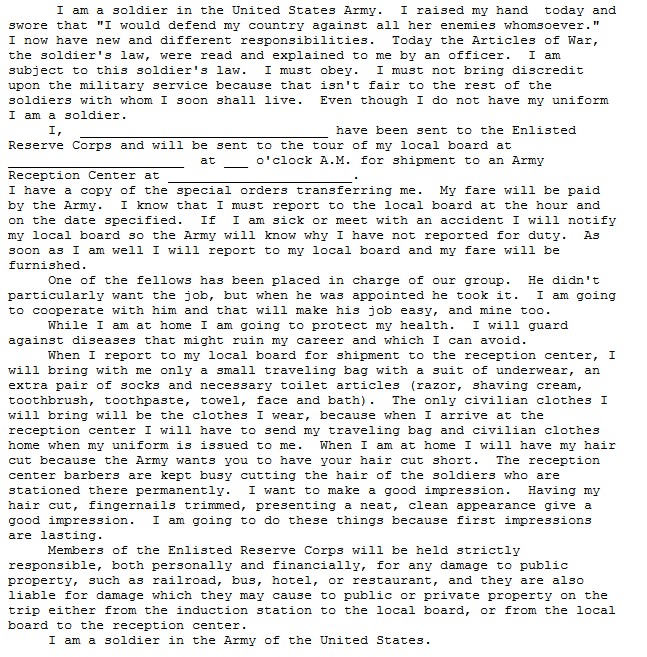
PATCHES WORN BY DOG BATTERY
PICTURES, MILTON NEIL PROCTOR, DOG BATTERY
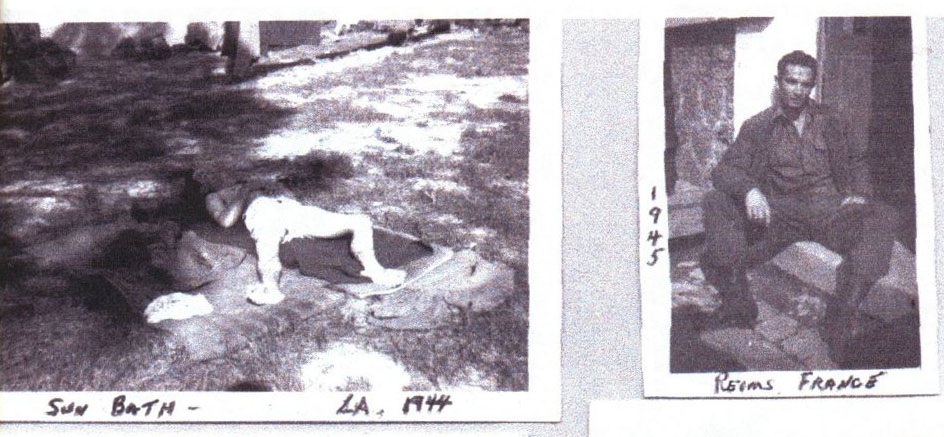

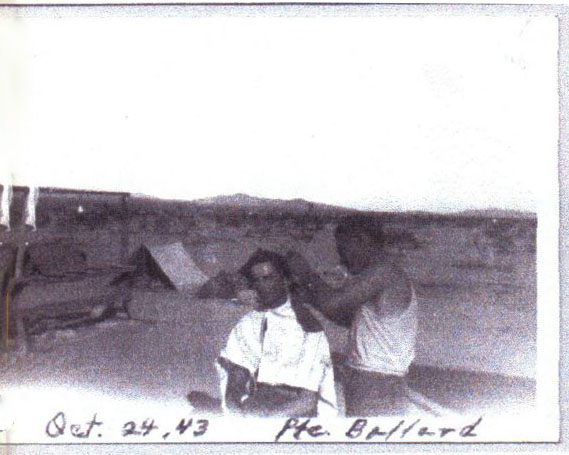
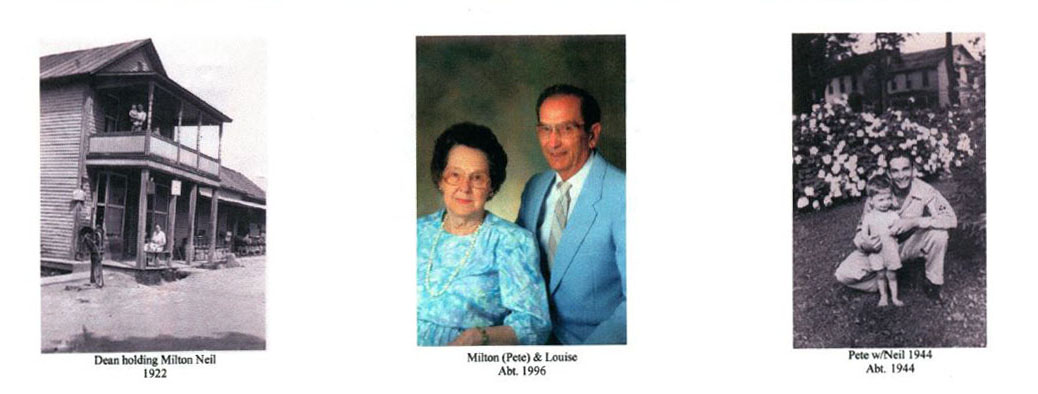
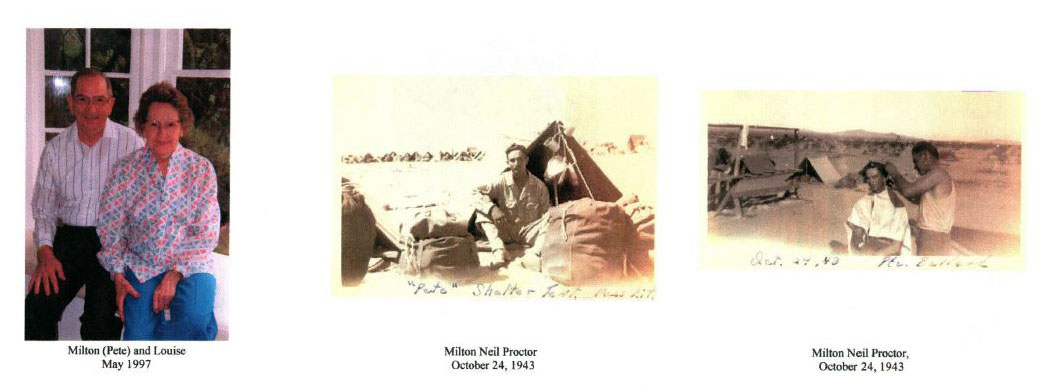

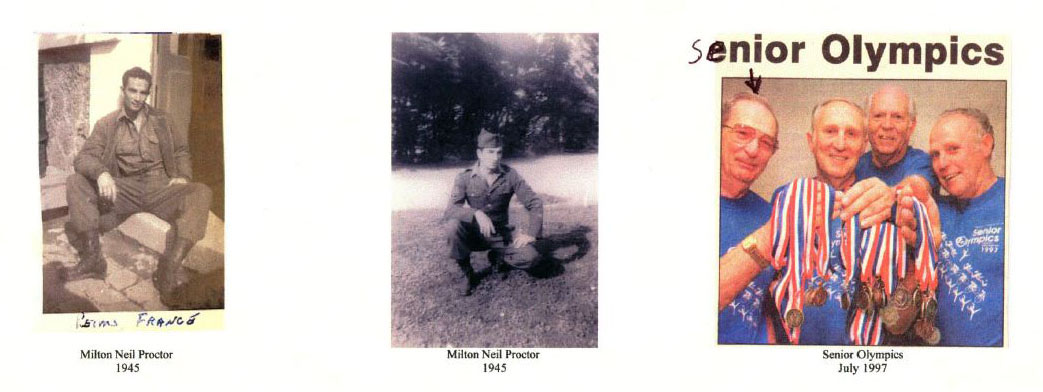
GRADES, STRIPES, ATTAINED BY MILTON NEIL PROCTOR
